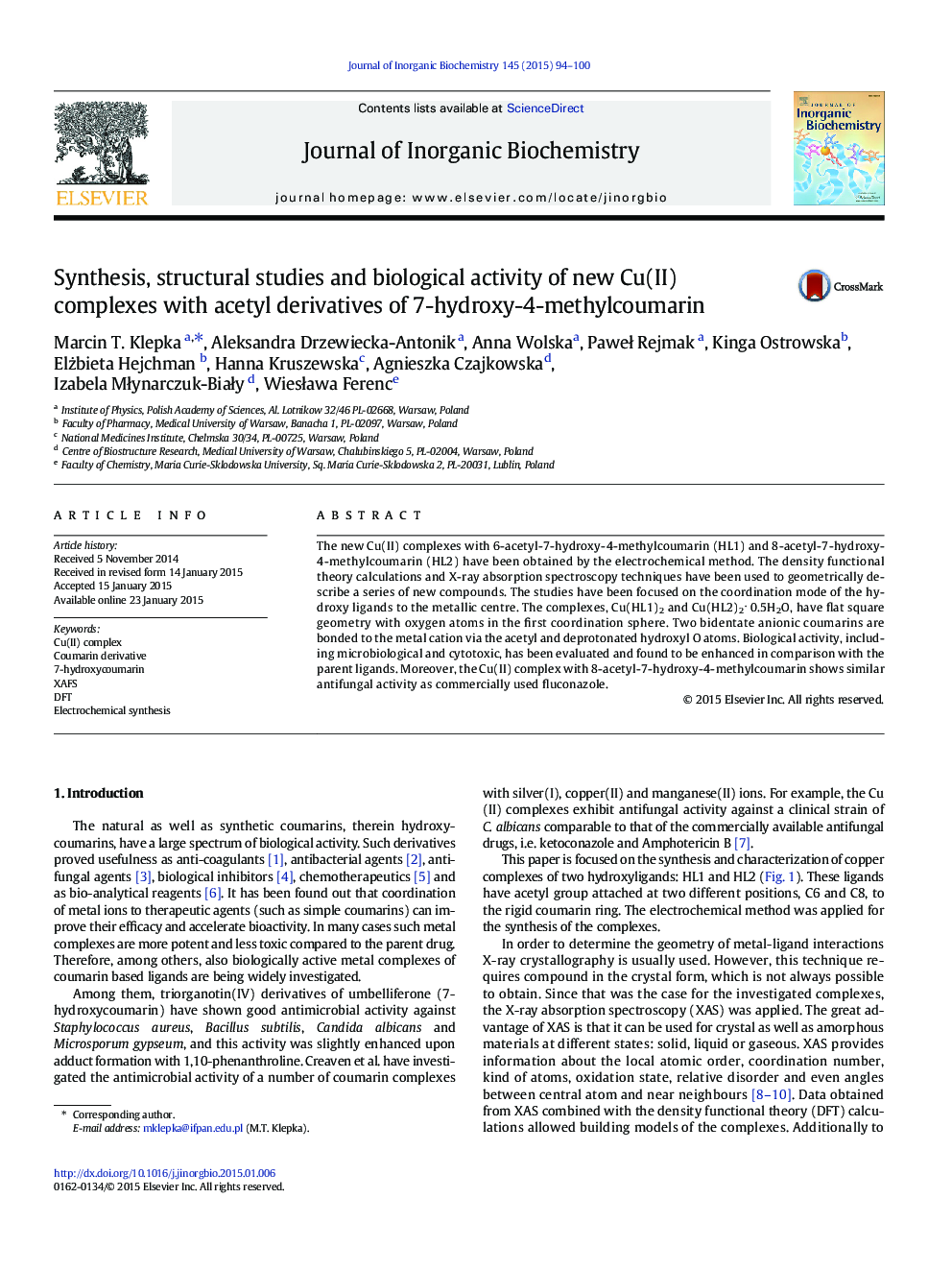| Article ID | Journal | Published Year | Pages | File Type |
|---|---|---|---|---|
| 1317164 | Journal of Inorganic Biochemistry | 2015 | 7 Pages |
•The DFT calculations & XAFS studies allowed one to geometrically describe new compounds.•New Cu(II) complexes with 7-hydroxy-4-methylcoumarin were biologically tested.•Position of acetyl group modulates complex biological properties.
The new Cu(II) complexes with 6-acetyl-7-hydroxy-4-methylcoumarin (HL1) and 8-acetyl-7-hydroxy-4-methylcoumarin (HL2) have been obtained by the electrochemical method. The density functional theory calculations and X-ray absorption spectroscopy techniques have been used to geometrically describe a series of new compounds. The studies have been focused on the coordination mode of the hydroxy ligands to the metallic centre. The complexes, Cu(HL1)2 and Cu(HL2)2⋅ 0.5H2O, have flat square geometry with oxygen atoms in the first coordination sphere. Two bidentate anionic coumarins are bonded to the metal cation via the acetyl and deprotonated hydroxyl O atoms. Biological activity, including microbiological and cytotoxic, has been evaluated and found to be enhanced in comparison with the parent ligands. Moreover, the Cu(II) complex with 8-acetyl-7-hydroxy-4-methylcoumarin shows similar antifungal activity as commercially used fluconazole.
Graphical abstractThe studies were focused on obtaining information about metal organic ligand binding mechanism. It was done by combining several analytical techniques. The most important were XAFS and DFT which allowed one to geometrically describe new compounds. Finally, biological activity tests showed that activity is enhanced in comparison to the pure ligands.Figure optionsDownload full-size imageDownload as PowerPoint slide
